Thingiverse

Mars Airship by jwhart1
by Thingiverse
Last crawled date: 3 years ago
This submittal is for a mobile rigid airship Mars base. For the 2014 NASA Mars base challenge.
It is assumed that a manned mars mission would run 5-10 years, and that the range of any rovers, etc in a stationary base would be limited to a few hundred kilometers. With a mobile base, any site on Mars can be studied.
The base survivability will be improved by being nomadic, whenever a surface exploration is not underway the base can be in motion to keep up with the sunlight or avoid inclement weather (using some orbital weather satellites).
The top of the airship will have greenhouses and solar arrays (my model shows two greenhouses and three solar arrays. And the lower portion will be the living quarters, laboratory, and engines.
It is assumed that the mobile base will act primarily as a robot control center and repair facility. Most of the scientific/exploratory missions will still be handled by robtots, but the robots will be controlled, deployed/retrieved, and maintained by the crew of the mobile base. This will allow ongoing long term scientific/exploratory missions while the base stays in motion.
The dirigible gas can be hydrogen, left over or reclaimed from propulsion fuel tanks. The martian atmoshpere is mostly low pressure CO2 so there will be little risk of fire.
And if the crew, a few years into the mission, decides to paint a giant skull and crossbones on the side of the base, and start saying "Yar" or "Ya har" a lot, we can all consider that to be awesome.
Update June 10, 2014
-Added more verticle beams, because the loading of the horizontal beams (in my imagination) resulted in too much deflection due to the weight of the greenhouses.
-Changed the engines from propeller looking devices to a more printer friendly turbine-like design. Didn't mention it before, but these ought to be electric powered given the need for a renewable power source (because re-supplying from earth is prohibitively expensive).
-Added some tubes for personnel, power, and gas exchange between the lower quarters and the greenhouses.
A challenge question that may arise is, given the very low atmospheric pressure on Mars, is feasible to float anything on it? Technically, the answer is yes. If you throw a less dense gas than CO2, say hydrogen into a balloon on Mars, the balloon will expand until pressures are approximately equal, and the balloon will have some small lifting force on it. Just like a helium balloon in the earth's primarily nitrogen atmosphere. Still there are limitations in the amount of lift that can be generated due to the low pressure, but some of this will be countered by the lower gravity (Revision, no it will not, the lower gravity is nothing but a problem in this bouyancy situation, see below). In the end, it'll amount to figuring out how much mass can be lifted per cubic liter of balloon, and from there figuring out how big a balloon is needed.
Final Update
-Design has been modified to improve printability, while complementing the more important design aspects. Printability has been improved from "needs an SLS machine" to "hey, I bet I could make that work with a few settings adjustments."
Final Science Update
Some Lift Chicken Scratches:
Martian atmospheric pressure at top of Olympus Mons = 0.03kPa
Average Martian atmospheric pressure = 0.6kPa
Minimum Martian Temperature = 130 kelvin
Maximum Martian Temperature = 308 kelvin
From the ideal Gas Law:
Density(kg/m^3) = P(Pa)/[R(kgK)T(K)]
R_CO2 = 189
R_H2 = 4157
Lifting Gas Volume from the model
(assuming 1 mm = 1 meter) is equal to 195000 m^3
Pressure(Pa)
Temperature(K)
Volume(m^3)
Max ship Load (kg)
30
130
195000
227.3
30
308
195000
95.9
600
130
195000
4550
600
308
195000
1920
Based on those calculations, the ship will have to be extremely light
with a load less than 1 ton. Obviously the ship doesn't appear to be operable at altitudes comparable to the top of Olympus Mons, but there may be happy middle ground.
It is assumed that a manned mars mission would run 5-10 years, and that the range of any rovers, etc in a stationary base would be limited to a few hundred kilometers. With a mobile base, any site on Mars can be studied.
The base survivability will be improved by being nomadic, whenever a surface exploration is not underway the base can be in motion to keep up with the sunlight or avoid inclement weather (using some orbital weather satellites).
The top of the airship will have greenhouses and solar arrays (my model shows two greenhouses and three solar arrays. And the lower portion will be the living quarters, laboratory, and engines.
It is assumed that the mobile base will act primarily as a robot control center and repair facility. Most of the scientific/exploratory missions will still be handled by robtots, but the robots will be controlled, deployed/retrieved, and maintained by the crew of the mobile base. This will allow ongoing long term scientific/exploratory missions while the base stays in motion.
The dirigible gas can be hydrogen, left over or reclaimed from propulsion fuel tanks. The martian atmoshpere is mostly low pressure CO2 so there will be little risk of fire.
And if the crew, a few years into the mission, decides to paint a giant skull and crossbones on the side of the base, and start saying "Yar" or "Ya har" a lot, we can all consider that to be awesome.
Update June 10, 2014
-Added more verticle beams, because the loading of the horizontal beams (in my imagination) resulted in too much deflection due to the weight of the greenhouses.
-Changed the engines from propeller looking devices to a more printer friendly turbine-like design. Didn't mention it before, but these ought to be electric powered given the need for a renewable power source (because re-supplying from earth is prohibitively expensive).
-Added some tubes for personnel, power, and gas exchange between the lower quarters and the greenhouses.
A challenge question that may arise is, given the very low atmospheric pressure on Mars, is feasible to float anything on it? Technically, the answer is yes. If you throw a less dense gas than CO2, say hydrogen into a balloon on Mars, the balloon will expand until pressures are approximately equal, and the balloon will have some small lifting force on it. Just like a helium balloon in the earth's primarily nitrogen atmosphere. Still there are limitations in the amount of lift that can be generated due to the low pressure, but some of this will be countered by the lower gravity (Revision, no it will not, the lower gravity is nothing but a problem in this bouyancy situation, see below). In the end, it'll amount to figuring out how much mass can be lifted per cubic liter of balloon, and from there figuring out how big a balloon is needed.
Final Update
-Design has been modified to improve printability, while complementing the more important design aspects. Printability has been improved from "needs an SLS machine" to "hey, I bet I could make that work with a few settings adjustments."
Final Science Update
Some Lift Chicken Scratches:
Martian atmospheric pressure at top of Olympus Mons = 0.03kPa
Average Martian atmospheric pressure = 0.6kPa
Minimum Martian Temperature = 130 kelvin
Maximum Martian Temperature = 308 kelvin
From the ideal Gas Law:
Density(kg/m^3) = P(Pa)/[R(kgK)T(K)]
R_CO2 = 189
R_H2 = 4157
Lifting Gas Volume from the model
(assuming 1 mm = 1 meter) is equal to 195000 m^3
Pressure(Pa)
Temperature(K)
Volume(m^3)
Max ship Load (kg)
30
130
195000
227.3
30
308
195000
95.9
600
130
195000
4550
600
308
195000
1920
Based on those calculations, the ship will have to be extremely light
with a load less than 1 ton. Obviously the ship doesn't appear to be operable at altitudes comparable to the top of Olympus Mons, but there may be happy middle ground.
Similar models
cg_trader
$99

Viking Lander
...re and soil, and to search for evidence of life on mars. download today, and relive the golden age of nasa and the space program!
3dwarehouse
free

Mars Direct Style mission.
...mars direct style mission.
3dwarehouse
a martian landscape with a mars direct mission.
3dwarehouse
free

Martian mars base
...martian mars base
3dwarehouse
martian mar base #martian #3d_model #3d_warehouse #mars
cg_trader
$20

AT airship heated
...an airship intented for (world) travellers; it is used similary as an rv/camper. it can carry 2 people, aswell...
cg_trader
$62
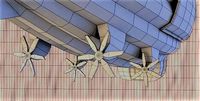
Airship
...ic wall business light air airship plane fly baloon design airplane ballon jet balon airliner balon aircraft jet plane wall light
3dwarehouse
free

Martian Rover
...martian rover
3dwarehouse
a rover designed for a man mission to mars. #mars #mars_rover #rover
grabcad
free

Mars Glider Project
...mars glider project
grabcad
wing design for flight in the martian atmosphere
3dwarehouse
free

Gas Holder, Hackney, London, UK
...e weight of a movable cap. typical volumes for large gasholders are about 50,000 cubic metres, with 60 metre diameter structures.
3dwarehouse
free

Mission to Mars? Part 13 (EDL)
...bit we can come back to pick them up later for the return trip, for now we are beginning our descent into the martian atmosphere.
cg_trader
$5

Balloon lift scissors
...balloon lift scissors
cg trader
balloon lift scissors balloon lift scissors propane gas industrial other
Jwhart1
thingiverse
free

Flower Pot by jwhart1
...flower pot by jwhart1
thingiverse
decorative flower pot
thingiverse
free

Spiral Pencil Cup by jwhart1
...spiral pencil cup by jwhart1
thingiverse
an ornate pencil cup.
thingiverse
free

Cigar Hardcase by jwhart1
...cigar hardcase by jwhart1
thingiverse
slip fit case suitable for just about any cigar size.
thingiverse
free

Linked Fences by jwhart1
...1
thingiverse
meant to be demonstration of the versatility of the 3d printing, to show that interlocked pieces could be printed.
thingiverse
free

Decorative shelf hanger by jwhart1
...decorative shelf hanger by jwhart1
thingiverse
this is a small decorative print designed to hang on a 3/4" shelf.
thingiverse
free

OpenScad line3d module by jwhart1
...openscad line3d module by jwhart1
thingiverse
very simple module which turns vector arrays into solid 3d lines.
thingiverse
free

Openscad Spiral Module Library by jwhart1
...openscad spiral module library by jwhart1
thingiverse
openscad library with modules which can generate spirals.
thingiverse
free

Hydraulic Piston (simple Syringe type) by jwhart1
...hydraulic piston (simple syringe type) by jwhart1
thingiverse
syringe type plunger and cylinder.
thingiverse
free

Inch Printer in place of a Support by shivinteger
...[3] thing url : http://www.thingiverse.com/thing:219884 [3] thing author : jwhart1 [3] thing licence : creative commons - attribution -...
Airship
3d_export
$10

airship
...airship
3dexport
airship post-apocalypse.
3d_export
$5
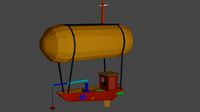
boat airship
...boat airship
3dexport
boat airship
turbosquid
$30

Airship
... available on turbo squid, the world's leading provider of digital 3d models for visualization, films, television, and games.
turbosquid
$5
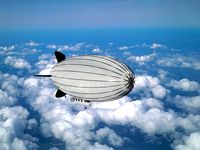
Airship
... available on turbo squid, the world's leading provider of digital 3d models for visualization, films, television, and games.
turbosquid
free
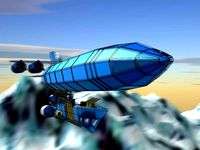
airship
... available on turbo squid, the world's leading provider of digital 3d models for visualization, films, television, and games.
3d_export
$5
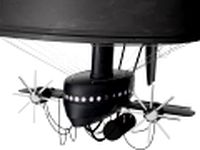
Airship 3D Model
...airship 3d model
3dexport
airship дирижабль steampunk стимпанк
airship 3d model artee 62527 3dexport
archive3d
free
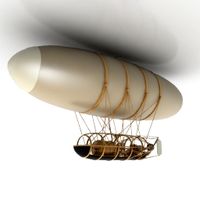
Airship 3D Model
...ive3d
airship dirigible
airship n220808 - 3d model (*.gsm+*.3ds) for interior 3d visualization.
3d_ocean
$15

Airship Duff
... poly lowpoly marge model party bus render rig simpsons the simpsons
airship duff ,modeled,textured and animated in cinema4d r16.
turbosquid
$2

Airship Nautilus
...
royalty free 3d model airship nautilus for download as blend on turbosquid: 3d models for games, architecture, videos. (1578862)
turbosquid
$50

Airship Steampunk
...e 3d model civilian airship for download as c4d, obj, and fbx on turbosquid: 3d models for games, architecture, videos. (1612415)
Mars
3d_ocean
$10

Mars
...tar stars system universal way world
this is the mars with atmosphere. the textures file including 4 maps. thank you for looking.
turbosquid
$2

MARS
...
turbosquid
royalty free 3d model mars for download as blend on turbosquid: 3d models for games, architecture, videos. (1170651)
3ddd
free

ClassiCon Mars
...classicon mars
3ddd
classicon , mars
стул mars от classicon.
3ds max 2011 + fbx. vray.
turbosquid
$12

Mars
...id
royalty free 3d model mars for download as blend and gltf on turbosquid: 3d models for games, architecture, videos. (1659040)
turbosquid
$1

the mars
...oyalty free 3d model the mars for download as blend and blend on turbosquid: 3d models for games, architecture, videos. (1704346)
turbosquid
free

mars
...squid
royalty free 3d model mars for download as max and obj on turbosquid: 3d models for games, architecture, videos. (1355198)
turbosquid
$59

Mars
...
royalty free 3d model mars for download as max, obj, and fbx on turbosquid: 3d models for games, architecture, videos. (1259238)
turbosquid
$12

Mars
...lty free 3d model mars for download as 3ds, max, obj, and fbx on turbosquid: 3d models for games, architecture, videos. (1152228)
turbosquid
$5

Mars
...y free 3d model mars for download as obj, fbx, blend, and dae on turbosquid: 3d models for games, architecture, videos. (1292956)
3d_export
free

mars landscape
...mars landscape
3dexport
mars landscape made with word machine.
